One of the issues with having a number of chickens is it’s not always easy to keep track of their age, especially if you have birds of the same breed or similar colouring. Some folks with larger flocks like to keep track of their birds by using leg bands to differentiate them.
There are different styles of bands, some made of metal, but most are plastic; some are fixed, some expandable, while others require being replaced as the bird grows. I don’t band many of my birds, but when I do it’s often to keep track of a particular hatch or to monitor which hens lay a particular coloured egg. For instance, my chicks hatched from blue eggs won’t reliably go on to lay blue eggs because their mothers may only carry one blue egg gene. I might put a blue leg band on all those chicks and then, months later, confirm how many of them are actually laying blue eggs.
I find zip ties are easy for chicks: they are flexible, come in a number of colours and I’m able to manage them without assistance. The drawback is they need to be replaced as the chick’s leg gets bigger. There are spiral-shaped expanding ones, but I find that they’re more difficult to apply. Chick leg bones are thin and easily damaged when wrestling to get this type on (or off), so I’ve stopped using them. There are also plastic and metal snap together ones as well as custom made bands printed with your chicken’s name. You can even get them with tiny charms, which I wouldn’t recommend as birds might be attracted to those little baubles and inadvertently eat them.





Another type of identifier is a metal wing band that is usually used with day old chicks. This method requires piercing the thin skin of the wing with one end of the band and then pressing both ends of the tag securely together. Wing bands need to be installed properly or they can cause damage to tissue, blood vessels or the wing tendon. They can be used for older birds, but I wouldn’t recommend anything that causes pain or has the potential to cause damage.


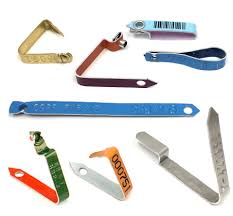
There are two issues with leg bands: they can fall off rendering the practice useless and they need to be monitored so they don’t get too tight causing issues for the birds that wear them.
The following is the story of Kimberly’s hen whose leg band became overgrown resulting in both pain and difficulty walking.
Latte, Buff Laced Polish Bantam, 18 months old
Many folks, on seeing an animal in distress, step in to help; Kimberly was one of them.
“I raise standard sized burros that were part of a BLM round up in 2019 from an overpopulated range in Nevada; Royal White hair sheep; Narragansett turkeys; Dutch Hookbill ducks and 80 chickens, mostly large fowl rare breeds.
I have standard sized buff laced Polish chickens and was approached by a breeder at an APA poultry show in Arkansas. I told him I wasn’t interested in buying bantams for myself, but would come look at them because I know breeders who would be and I could bring them back to Texas. That’s when I saw the band embedded in Latte’s leg which caused her to limp and impaired her ability to stand properly for any length of time.


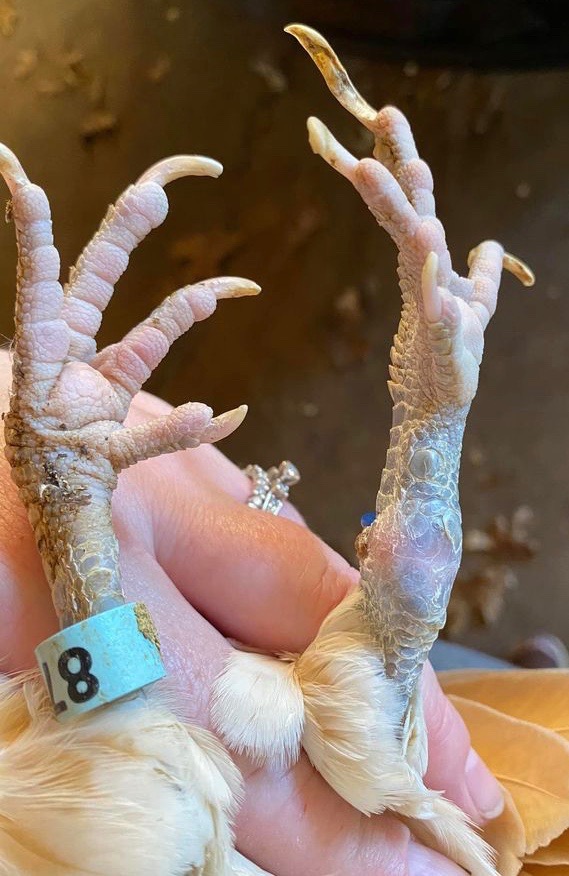
Later that evening I decided I was going to intervene to make sure she got veterinary care. The thought of her traveling back to Wisconsin and continuing to live with someone who chose not to treat that injury really weighed on me.
I bought her as part of a trio and looking back I wish I had purchased all the birds that breeder had for sale. Although both hens had issues with their leg bands Latte was the only one with an embedded band that needed immediate care. The other hen had the same type of spiral band which had just started causing constriction issues on her leg. I was able to remove that one as it hadn’t damaged the skin yet. The rooster and other hen went to an amazing home with a breeder that I know will take excellent care of them but I kept Latte, who I absolutely adore.”
Several days later, Latte was treated by Dr. Thielen at the Texas Avian & Exotic Hospital.
X-rays were taken to ensure no bone or vital structures were involved. If you look closely you can see that the band was so tight it affected the bone growth as she matured.

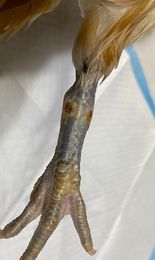
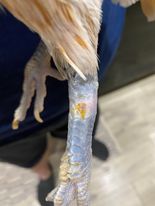
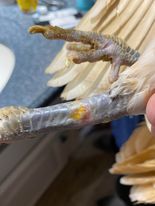
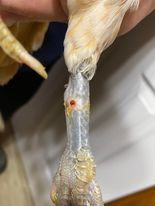
Latte was given painkillers, a sedative and local anesthetic for the procedure. The vet was able to remove the band by snipping it without cutting into her skin and then, carefully pulling the band in order to extract it. If the skin had adhered to the band than cutting would have been required.
She also had overgrown toenails from the combination of being caged and not using her foot properly so the vet gave her a pedicure to trim them.
Post-recovery, she was prescribed Meloxicam (Metacam) for pain and the antibiotic Doxycycline to prevent infection. After five days the pain medication was no longer necessary as Latte was bearing her full weight on the leg and walking without a limp. Once off the pain medication she showed no signs of discomfort.
“We haven’t integrated her into a flock yet as she is still on antibiotics once a day so she has been my very talkative office assistant. Latte does get fresh air and grass in an enclosure. She has one more week of medications and then will be integrated into our flock of Silkies which are her size.”

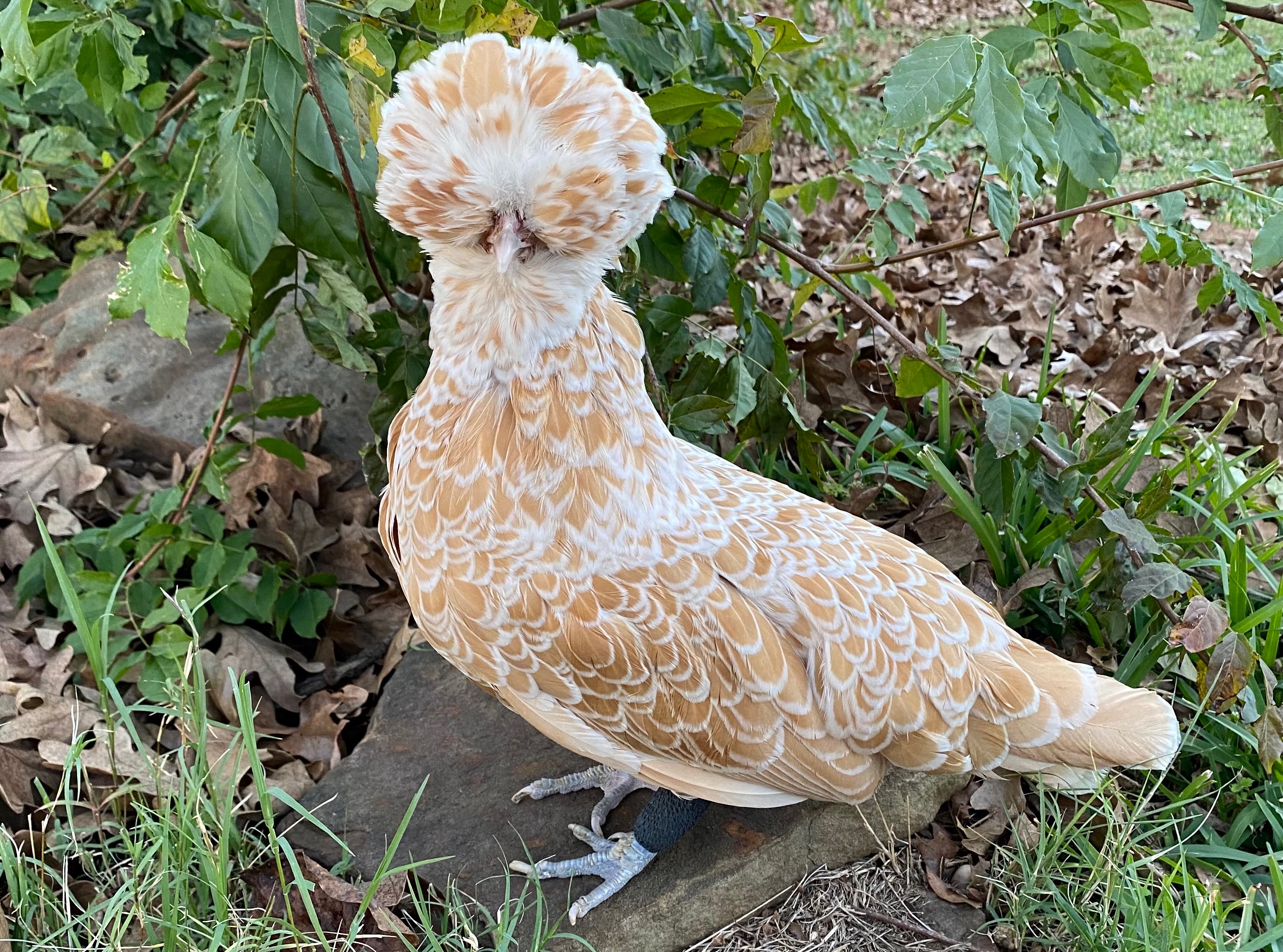
The original owner used different style bands on each of Latte’s legs. The spiral bands are designed to expand as the bird grows, so clearly they were too small. Regardless it still should have been obvious there was a problem. Looking at those photos it makes one wonder how a breeder couldn’t have noticed that their hen had a chronic limp or seen that the band was clearly overgrown. It also takes a bit of nerve to take a bird with those issues to a poultry show and then sell her with no mention of her health issues.
This is a reminder to be careful what kind of bands we use for our birds and to monitor them to make sure there are no issues. It’s also a good idea to check birds that we’re adopting just in case they’re experiencing a problem with a band that we might not have even been aware of.
I’m happy to know there are good Samaritans like Kimberly who would adopt a hen that required some medical intervention and that she was willing to spend the time and money to nurse Latte back to health. She’s expected to make a full recovery.
Many thanks to Kimberly Underwood for sharing her story and photos, used with permission.

We do use the spiral plastic expanding leg bands from early chickhood. However we are ever watchful of size and change them when they don’t easily slip up and down on the leg. I have found if you warm them in your hand they will spring out to allow easy placement on the leg. The best remover is a good quality toenail clipper.
We have recently added numbered metal banding. Our first experience with them so I am not prepared to give them a yea or a nay. I won’t be using them on immature chicks anyway.
LikeLiked by 1 person
Aw, lucky little Latte!
LikeLiked by 1 person